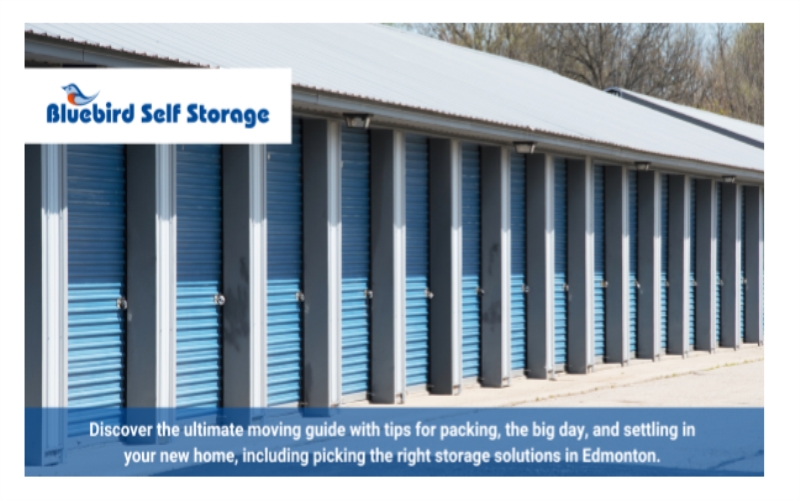Moving day can bring a blend of excitement and stress, whether you’re upgrading to a dream home or relocating for new opportunities. High-income earners and families navigating the complexities of a move need a comprehensive strategy to streamline the process. This blog post is your ultimate checklist, offering practical, experience-based tips to make your transition as smooth and worry-free as possible.
Utilizing this checklist, you can avoid common pitfalls and ensure every detail is accounted for, from the initial planning stages to the moment you set up your new space. It’s tailored to cater primarily to the unique needs and challenges that come with high-tier relocations, ensuring you don’t miss a beat in maintaining your lifestyle and responsibilities.
Pre-Move Planning
8 Weeks Before
- Start Early: Begin your moving process at least two months in advance to avoid last-minute pressure.
- Create a Moving Binder: Keep all your moving-related paperwork in one place. From contracts to checklists, make sure it’s all easily accessible.
- Inventory Your Belongings: Make a room-by-room inventory of your possessions, highlighting items of significant value.
- Research Movers: Choose a reputable moving company that caters to high-end relocations. Ask for recommendations, read reviews, and get quotes from multiple companies.
- Decide What to Keep: Go through your belongings and decide what to move, sell, donate, or discard. This is a good time for decluttering.
- Secure Important Documents: Collect and secure all essential documents, such as birth certificates, passports, and financial records. Consider making digital copies.
6 Weeks Before
- Research Moving Companies: Secure quotes and schedule in-home estimates from reputable movers. Remember to check their reviews and ratings.
- Declutter: Use this time to rid your home of items you no longer need. Donate, sell, or recycle things that won’t move with you.
- Order Supplies: Purchase or acquire moving boxes, tape, bubble wrap, and other packing materials. Consider specialty containers for fragile items.
- Notify Service Providers: Inform your utility companies, internet provider, and other service providers about your moving dates. Arrange for services at your new address.
- Take Measurements: Ensure your furniture will fit in your new space by measuring rooms and doorways. This might impact what you decide to take with you.
Packing Strategies
4 Weeks Before
- Gather Supplies: Purchase or order moving boxes, packing tape, bubble wrap, and permanent markers. Don’t forget specialty containers for items like clothing and dishes.
- Begin Packing: Start with seasonal items and things you use infrequently. Label each box with its contents and intended room.
- Create an Inventory List: Keep a detailed list of every box and its contents. This will be invaluable for tracking everything during the move and when unpacking.
- Pack a Personal Essentials Box: Put together a box or suitcase with essentials you’ll need immediately upon arrival, like toiletries, a few changes of clothes, and important chargers.
- Care for Special Items: Wrap artwork, mirrors, and other fragile items with extra care, and clearly label these boxes as ‘Fragile’ to ensure they’re handled properly.
- Room by Room Strategy: Tackle one room at a time to keep the packing process organized and manageable. This keeps items from the same room together and simplifies unpacking.
2 Weeks Before
- Personal Records: Collect school records, legal documents, and transfer prescriptions to your new local pharmacy.
- Confirm Moving Details: Reach out to your moving company to confirm the date, time, and any specific instructions for the day of the move. Ensure they have the correct addresses and contact information.
- Plan for Pets and Plants: Make arrangements for the safe transport of your pets and plants. Whether it’s finding pet-friendly accommodations for the trip or the right way to move plants, planning ahead is crucial.
- Backup Your Data: Ensure all important digital files from computers and mobile devices are backed up to an external hard drive or cloud storage. This includes photos, documents, and any other essential data.
The Essentials
1 Week Before
- Essentials Box: Pack an essentials box for easy access during your first day or two in your new home, including toiletries, clothes, chargers, and basic tools.
- Label Rooms: Before the movers arrive, label each room in your new home to match the boxes designated for those spaces. This will streamline the unpacking process and help movers know exactly where to place your belongings.
- Prepare Appliances: Clean and prepare large appliances for the move. If you’re taking refrigerators, washers, or dryers with you, ensure they are empty, cleaned, and unplugged at least 24 hours before moving day. Secure all doors and loose parts to prevent damage.
The Big Day
Moving Day
- Essentials First: Load your essentials box last so it can be unloaded first. Make sure valuables and important documents are with you in your personal vehicle.
- Final Walkthrough: Before the movers get to work, do a final walkthrough of your home to ensure nothing is overlooked or left behind. Check closets, storage spaces, and other easily forgotten areas.
- Direct the Movers: Be present to direct the movers as they load your belongings. Offer guidance on which items are fragile or require special handling to prevent any mishaps.
- Stay Hydrated and Nourished: Moving day can be long and exhausting, so remember to keep water and snacks on hand for yourself and the movers. Staying hydrated and nourished will help keep energy levels up throughout the day.
Post-Move Unpacking
1 Week After
- Systematic Unpacking: Unpack room by room, starting with the kitchen and bedrooms. Break down and recycle boxes as you go to reduce clutter.
- Check Utilities and Services: Ensure all utilities are functioning properly, and all subscribed services (internet, cable) are up and running. Address any issues immediately to avoid discomfort or inconvenience.
- Familiarize Yourself with the Neighborhood: Take some time to explore your new area. Locate essential services such as grocery stores, hospitals, and post offices. Introducing yourself to neighbors can also help you settle in more quickly.
- Review Home Security: Assess the security of your new home. Consider installing a security system if one is not already in place. Check that all windows and doors are secure and functioning correctly.
2 Weeks After
- Register Vehicles: If you’ve moved to a new state, remember to update your vehicle registration and driver’s license.
- Update Mailing Address: Ensure that you update your address with all relevant parties, including banks, credit card companies, and any subscriptions or memberships. This will prevent any important mail from being missed or lost.
- Evaluation and Feedback: Take a moment to reflect on your moving process and write a review or provide feedback for your moving company. Sharing your experience can help others in making informed decisions and can also provide valuable insights for the service provider to improve.
Special Considerations for Storage
Self Storage in Edmonton
Successful moves often involve a temporary home for some of your belongings. Finding the right self storage solution in Edmonton can be an essential step in your moving process if your new space isn’t quite ready or you’re still deciding what to do with certain items. Thanks to companies like Bluebird Self Storage, finding storage units in Edmonton has never been more convenient.
When seeking out self storage in Edmonton, look for a provider that offers a range of unit sizes to meet your specific needs. Storage units in Edmonton, provided by businesses like Bluebird Self Storage, ensure your items are kept in a safe and accessible location. Remember to choose a unit based on the items you need to store; some may require a larger space than others.
The self-storage industry in Edmonton understands that convenience and accessibility are paramount. Bluebird Self Storage exemplifies this with their commitment to providing high-quality storage solutions. When selecting a self storage option, consider the length of time you’ll need the unit and the kind of access you’ll want. It could range from a few weeks to several months, depending on your individual circumstances. And while Bluebird Self Storage prides itself on maintaining clean, well-kept units, always ensure you check the facility yourself as part of your decision-making process.
Conclusion
Moving doesn’t have to be a daunting task. By following this methodical approach, you can transform moving day nightmares into a dream of organized transition. Don’t hesitate to rely on professional services like those offered by Bluebird Self Storage and remember to take care of yourselves during this significant life change. Happy moving!
Remember, this checklist is just the beginning. Tailor it to fit your unique moving circumstances, and you’ll find that with the right preparation, moving can indeed be a positive experience





